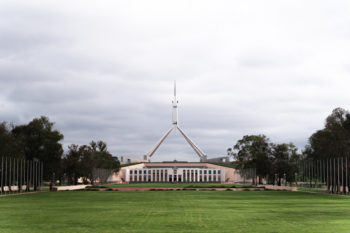Creating a level playing field – why investment is urgently needed to future-proof the Australian public health research workforce

DATE
TYPE Media coverage
With successes including world-leading responses to COVID and tobacco control, Australia’s public health research and practice sector is responsible for saving hundreds of thousands of lives. Yet the future of our workforce is now at a tipping point.
Australia’s health system is considered one of the best in the world, yet lives in Australia are still cut short every day because of preventable illness and inequality.
Nearly half of Australians (11.6 million people) have one or more chronic condition,1 many of which will inevitably be life-altering, and our most vulnerable communities are disproportionately affected. As much as 38 per cent of this burden could be prevented through public health initiatives that address risk factors such as poor nutrition, physical inactivity, tobacco smoking and harmful alcohol use.2
Public health focuses not on finding new treatments and medications, but on preventing avoidable disease, injury, disability and death and promoting healthy and sustainable environments. In Australia, this sector has already made significant advances that have saved countless thousands lives, including a reduced road toll through promoting use of seatbelts, a reduced burden from tobacco smoking, and a world-leading response to COVID-19.3
The Australian public, as the funders of research and health portfolios, has every right to expect appropriate investment in research that creates positive impact on population health and wellbeing, and that has a strong emphasis on equity.
It is concerning, then, that public health research in Australia is chronically underfunded compared to other fields, and compared to other OECD countries.4
Public health is a population-based and highly applied science, and many of our research proposals seek to address large-scale complex problems with social, structural, legal and political elements, including obesity, high alcohol use, inadequate housing and climate change. However, research assessment criteria are typically based on laboratory and clinical science methods, which undervalue the potentially most useful public health proposals that seek to understand the complexities of prevention.
For example, MRFF’s measures of success call for “new health treatments, drugs, interventions, devices and diagnostics” that should become embedded in clinical practice. It is clear that the majority of public health research applications are severely disadvantaged when assessed in this context.
As a result, in the 2021 MRFF Early to Mid-Career Researchers (EMCRs) Grant scheme, only 2 out of 55 public health grants were successful (a 3.6% success rate) by broad research area.
Similarly, the NHMRC supports research across the four pillars of health research – biomedical, clinical, public health and health services research. However, public health research is severely neglected in terms of grant success and proportion of total funding. Just considering large NHMRC schemes such as Centres of Research Excellence (CREs), Ideas, Investigators, Synergy, and Partnership grants, only 9.5% of successful applications (2.6% success rate for Ideas Grants; 11.6% for Investigator grants; 33.3% Partnership grants) were broadly prevention related, receiving just under 11% of funds for these schemes.
With no currently available plans to develop and invest in a strategy to support the public health research workforce, we find ourselves at a tipping point, especially when it comes to the career trajectories of our early and mid-career researchers (EMCRs).
The low investment in public health research is leading to significant opportunity costs in grant writing with little chance of success. It is limiting the opportunities for Australia to build the evidence that is required to inform and evaluate national and state public policy, and constraining our potential to continue to be world leaders in public health research and practice. Importantly, it is also negatively affecting the wellbeing of EMCRs, who report they are under increasing and unsustainable pressure.
As members of the Collaboration for Enhanced Research Impact (CERI),5 which brings together 11 CREs with The Australian Prevention Partnership Centre, we recently consulted with senior investigators, policy makers and EMCRs on a way forward that would enable Australia to deliver the public health outcomes the community expects.
We concluded that a structural review and reform of the research funding system is badly needed. It is timely to consider this in light of the current consultation on improving alignment and collaboration between the MRFF and NHMRC.6
Along with the Australian Academy of Health and Medical Sciences (AAHMS), we support better coordination between NHMRC and MRFF. We believe that a decision about the level of integration should also be informed by the goals of research funding. During the review process, it will be important to determine where funding for public health research sits, what the funding levels should be, and agree on more appropriate measurement metrics in order to see public health research thrive in Australia.
We would like to see a full review of MRFF and NHMRC outcomes of public health research grants, similar to the review of gender disparity in the Investigator Grant scheme,7 to ensure that we clearly understand the currently low rates of funding for public health. Where high quality public health research is being submitted, it needs to be adequately reviewed and funded to the fullest extent possible. Ultimately, this information could make the case for specific streams of funding for public health research fellowships, improvements in the review process or infrastructure support funding for the large, complex partnerships required for many successful public health projects.
Such a review would also be an opportunity to learn from the public health research funding environments overseas, such as Canada’s knowledge translation chairs and fellowships, or New Zealand’s focus on short expressions of interest that proceed to a full grant application only if they are judged to have a high chance of success.
At a time when complex problems such as obesity, globalisation and climate change are all posing unprecedented threats to public health and wellbeing, a strong public health workforce has never been more crucial. It is up to all of us in the research sector to articulate a collective vision, with a strong voice and greater influence for public health research to achieve future health and prosperity for all Australians.
URLs to link to further information:
- https://www.abs.gov.au/statistics/health/health-conditions-and-risks/health-conditions-prevalence/latest-release
- https://vizhub.healthdata.org/gbd-results/
- https://www.phaa.net.au/documents/item/3241
- https://stats.oecd.org/index.aspx?DataSetCode=SHA
- https://preventioncentre.org.au/work/collaboration-for-enhanced-research-impact-ceri/
- https://consultations.health.gov.au/health-economics-and-research-division/improving-alignment-and-coordination-mrff-mrea/
- https://www.nhmrc.gov.au/about-us/news-centre/gender-disparities-nhmrcs-investigator-grant-scheme
This story appeared in INSPIRE issue 20, 2023 – Future Workforce Planning



